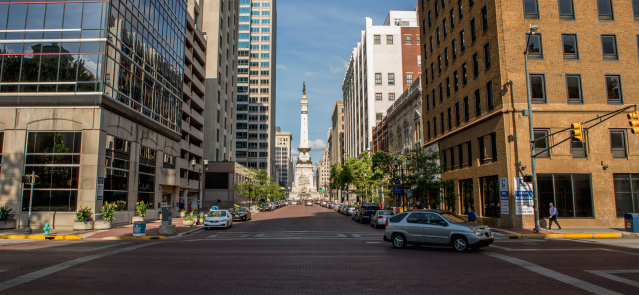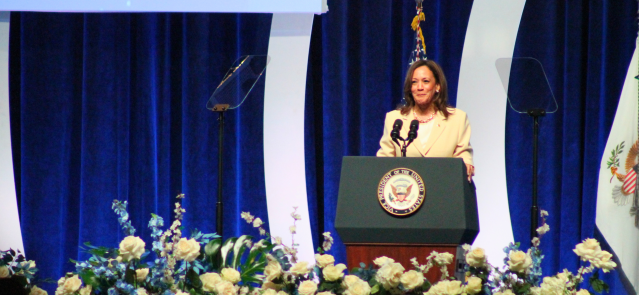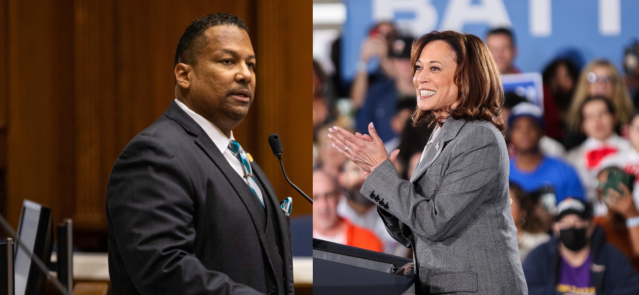Stay ahead of the curve as a political insider with deep policy analysis, daily briefings and policy-shaping tools.
Request a DemoYour questions answered: Why the state is feuding with Tippecanoe County over water for the LEAP District
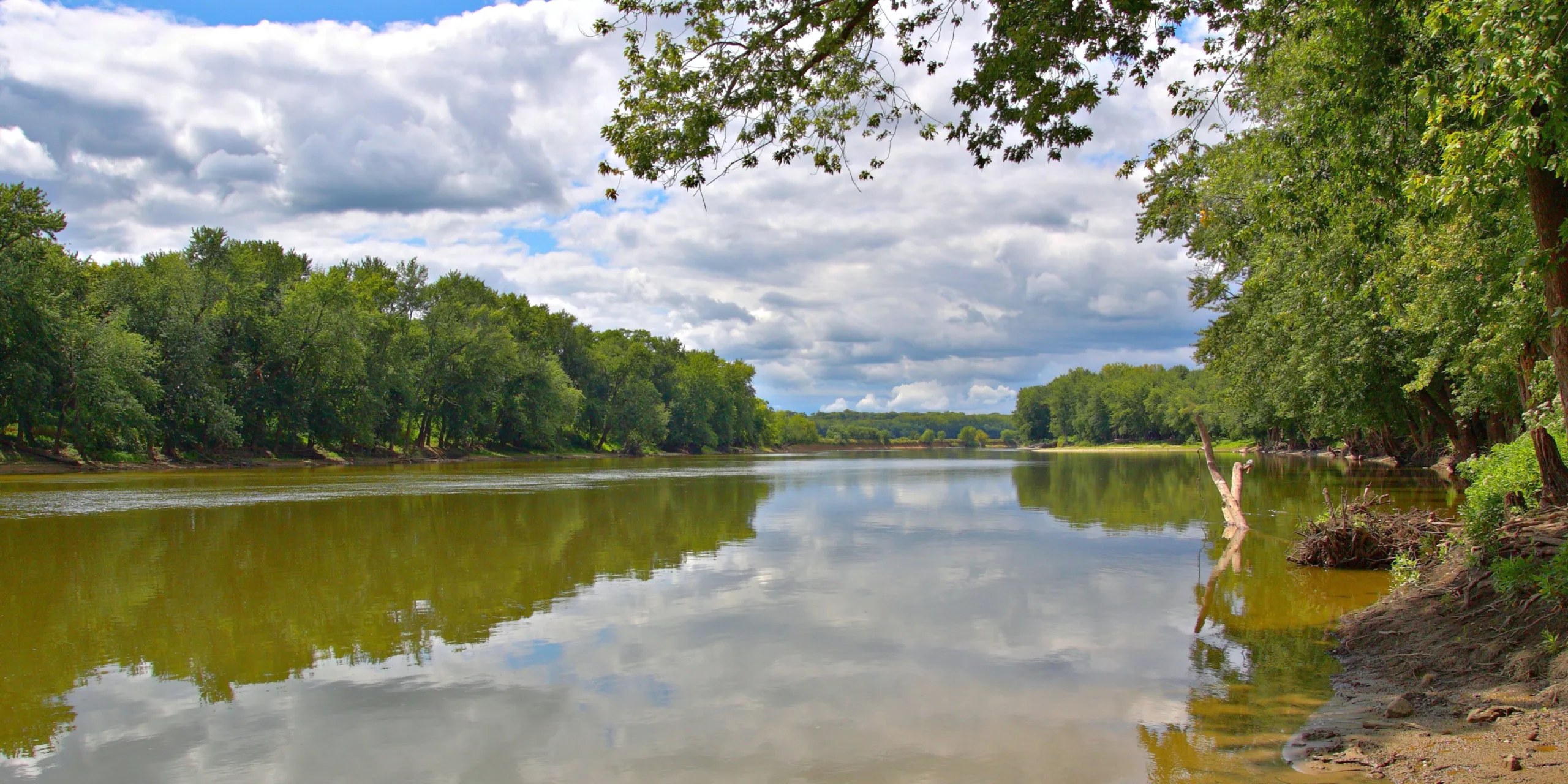
Wabash River taken at Fort Quiatenon near West Lafayette, Indiana. (Credit: Johnny Jupiter/Flickr)
Editor’s note: This article is part of a State Affairs and Fox59/CBS4 series looking at how decisions get made at the Indiana Economic Development Corp. and how it impacts economic development in the state. The IEDC has faced increased scrutiny due to its involvement with Boone County’s LEAP Lebanon Innovation District and because two gubernatorial candidates are former IEDC leaders. Read our first story here.
The gist
The Indiana Economic Development Corp. is banking on the success of the LEAP Innovation and Research District, a tech hub in Boone County.
But, the state agency is missing a crucial resource it needs to enable more high-tech industries to call the hub home: enough water. The IEDC, the state agency tasked with driving economic development, hopes to funnel water from the aquifer that sits adjacent to the Wabash River in Tippecanoe County roughly 40 miles away, if studies go as planned.
Opposition to the plan has bubbled over among Tippecanoe County residents and their elected leaders, concerned about what siphoning water away from their community could mean for them long term.
What was once an often-ignored topic in Indiana has become one of the most contentious, bi-partisan issues ahead of the 2024 legislative session.
“I’ve never seen an issue like this that united everybody,” said Sen. Spencer Deery, R-West Lafayette.
Here’s what you should know about the water fight.
What is the LEAP District
The LEAP District will be a 9,000-acre “hub of global innovation” in Lebanon. The land is already ready for the IEDC’s use whenever high-tech companies show interest.
The LEAP District was created in order to allow the state to move more quickly to land deals, said Secretary of Commerce David Rosenberg. Back in 2021, the IEDC lost a bidding war against Ohio for Intel, a chip manufacturer. One reason Indiana lost, Rosenberg said, was because Indiana didn’t have readily available land for use, and wasn’t able to move as quickly as Ohio.
Indiana-based drug manufacturer Eli Lilly and Company was the first to announce it would be building two manufacturing sites in the LEAP District, investing $3.7 billion and creating up to 700 jobs. Indiana is in the running for other companies as well.
“LEAP is not in any way or shape designed to compete against what other Indiana cities are doing,” Rosenberg said. “LEAP is designed to compete against international locations that are playing for the same types of companies of the future and other places throughout the United States, like Nashville or Austin, Raleigh, Phoenix.”
Why does the IEDC say Lebanon was chosen for the LEAP District?
Location, location, location. Lebanon is located 45 minutes from Purdue University and Rosenberg said it was relatively easy to piece together enough acreage in the city. Plus, unlike other areas of the state, it’s located within a 30-minute drive to an international airport and can pull from the central Indiana population center for talent.
Why does the LEAP District need outside water?
The IEDC already has a central Indiana source in place to provide 10 million gallons of water a day to the LEAP District. That’s enough to handle the current needs of the district, including those of Eli Lilly.
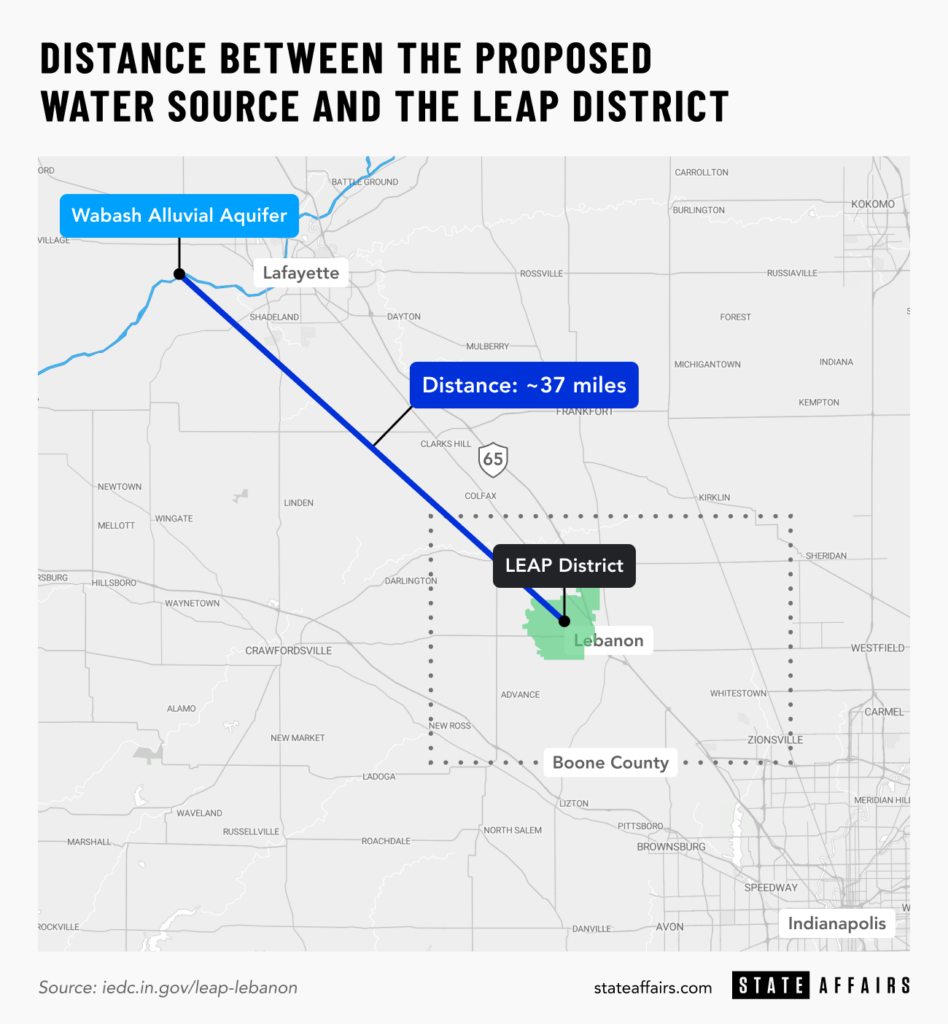
But, Rosenberg said that won’t be enough water should a high-water user decide to move to the LEAP District, which is the state’s goal. In June, the IEDC announced that Indiana is a finalist for a $50 billion semiconductor plant, the type of industry that depends on large amounts of water.
Rosenberg added that should a high water user not decide to settle in the LEAP District, the IEDC will no longer be involved in water discussions. Regardless, he said water scarcity in central Indiana is an issue that will have to be addressed in the future, even if a major water user doesn’t choose Indiana to expand in.
“Even outside of anything happening at LEAP, this is a problem that is staring the state in the face over the next few decades,” Rosenberg said. “Our premise was can we use economic development to unlock the resources to not only provide additional water for potential companies coming into these areas, but really solve a regional, generational water issue that everyone has identified and known about for decades and decades.”
An Indiana Finance Authority central Indiana water study released in 2021 estimated that the daily water demand in central Indiana would increase by more than 100 million gallons by 2070.
What is Indiana’s water solution?
The IEDC is looking at the Wabash Alluvial Aquifer as a likely solution to its water woes.
IEDC signed a $9 million contract with Black & Veatch Corporation earlier this year to manage water infrastructure. The contract itself outlined a plan to “convey raw water from a series of collector wells and pump stations located adjacent to the Wabash River” for the LEAP district.
But, Rosenberg emphasized the pipeline is not a done deal. At the request of the IEDC, INTERA Inc., has started testing how much water can sustainably be withdrawn from the aquifer adjacent to the Wabash River.
How much extra water does the LEAP District need?
Rosenberg said the IEDC has not placed a number on how much water it would need to pull from the aquifer. That would depend on which companies choose to move to the LEAP District, he said.
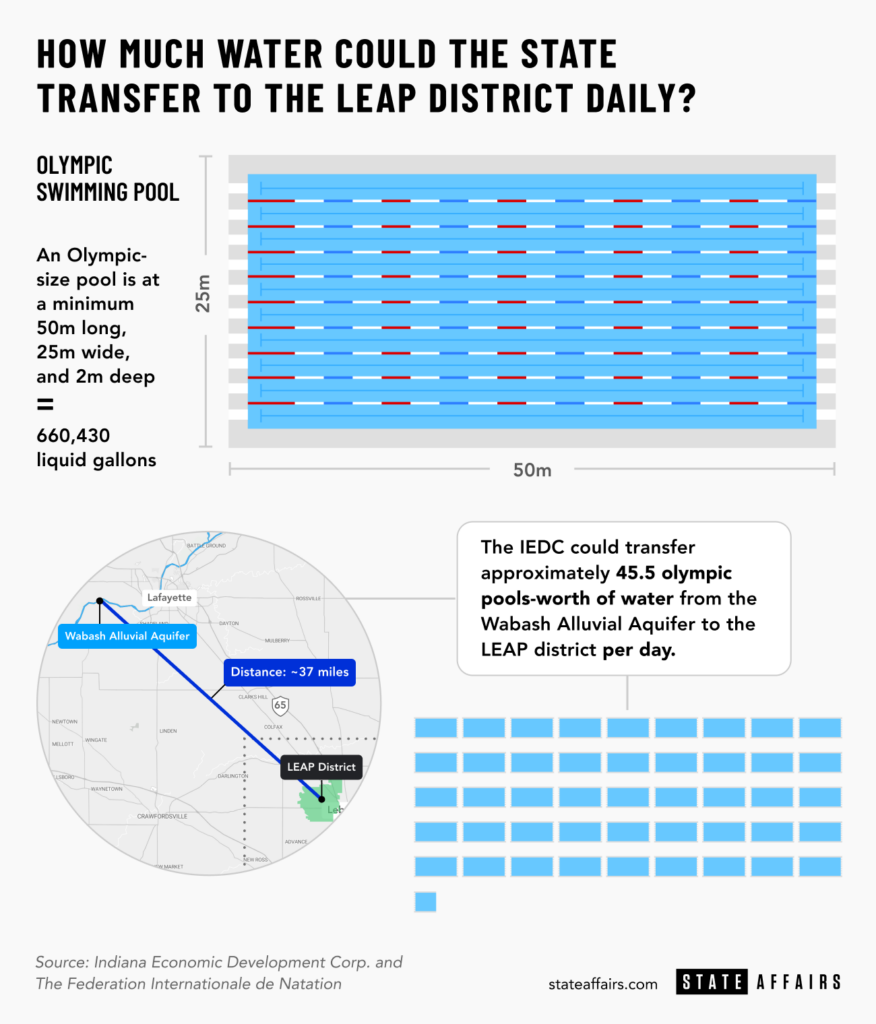
Intel in Ohio, for example, is expected to use 5 million gallons of water per day. That’s the kind of water usage Indiana should expect to see if the IEDC lands a chip manufacturer.
Preliminary results from the INTERA study show that two collector wells at the site will sustainably produce more than 30 million gallons of water per day. That’s the equivalent of more than 40 Olympic-sized swimming pools.
The actual amount of water withdrawn could be much larger. Water from the aquifer could be used for other central Indiana uses outside of just the LEAP District, to help address the expected 100 million gallons a day increase in water needs for central Indiana over the next 50 years.
There’s not yet an estimate of the maximum amount of water that could sustainably be moved from the aquifer.
Why are Tippecanoe County residents concerned?
Elected leaders and Tippecanoe County residents are worried that if the IEDC takes water from the aquifer adjacent to the Wabash River, it could negatively impact the county’s water supply and its own ability to expand economically in the future.
“The concern is once you develop that pipeline, Indiana doesn’t have any real rules in place to determine how much can be moved,” Deery said.
Plus, the LEAP District is located well outside of Tippecanoe County, which means the benefits to the community aren’t as obvious as they would have been had the IEDC chosen a location closer to the Wabash River for the development.
Does Tippecanoe have enough water to share?
That’s what the IEDC has been studying.
The preliminary results from the INTERA, Inc. study show that two wells on the site will sustainably produce more than 30 million gallons per day, with “minimal impact on home-owner wells” according to the IEDC.
Those opposed to the project, however, aren’t confident that the IEDC will be able to provide an unbiased look at what the impact on the Wabash River would be.
“Typically, you research before you buy,” Deery said, “and there’s been a sense around here that the decision has been made. And now it’s in search of the evidence to support that.”
What did Holcomb propose to ease concerns?
Last month, Gov. Eric Holcomb directed the Indiana Finance Authority to take over oversight of the INTERA water supply study.
“I am confident that these new efforts led by IFA will provide the necessary data to gain a greater understanding of the amount of excess water that is truly available to support all the surrounding region’s growth prior to any action being taken that could inadvertently jeopardize this needed resource,” Holcomb said in a statement. “ No entity is better suited to lead this overall pursuit than the IFA which will approach this study in the same methodical, collaborative, and transparent manner the organization has conducted in the past.”
Moving oversight of the water study to a different agency was praised by some critics of the project as a step in the right direction.
IFA will also start a comprehensive regional water study for north-central Indiana, expected to be completed in fall 2024.
What is Tippecanoe County doing to try to stop the pipeline?
Last month, Tippecanoe Commissioners unanimously advanced a nine-month moratorium on “high volume water export(s).”
Rosenberg said the commissioners’ moratorium would have no impact on the IEDC’s plans because the agency would not be in a place to pump water from the aquifer in the next nine months.
“I think the action was unnecessary and it was playing to some of the rhetoric and misinformation,” he said.
How will state lawmakers address water during the 2024 legislative session?
Republican legislative leaders say they want to avoid legislating on the water issue until they get the data. That means they have no plans to finance such a pipeline yet.
“We’re not going to take any other steps until we have an opportunity to study to make sure that there’s ample water for the projects that we’re trying to bring into the state of Indiana,” Senate President Pro Tem Rodric Bray said last month, “and we understand just how much is too much to take away from a particular community.”
Those who represent Tippecanoe County, such as Deery, hope to implement some guardrails “that would help protect all communities against any potential harm of large water transfers to another community,” he said in a press release.
What’s next?
The INTERA water supply study is expected to be completed in early 2024. Rosenberg said it’s “too premature” to say whether a water pipeline would move forward without the blessing of Tippecanoe County, should studies show the capacity to move large amounts of water is there.
“We’re not going to in any way inhibit Lafayette from their ability to to grow economically,” Rosenberg said, “because they’ve had so much success already.”
The legislative session convenes on Jan. 8 and must wrap up by mid-March.
Contact Kaitlin Lange on X @kaitlin_lange or email her at [email protected].
Contact Steve Brown on X @Steve_Brown_TV or email him at [email protected]
Facebook @stateaffairsin
Instagram @stateaffairsin
LinkedIn @stateaffairs
4 things to know about Braun’s property tax proposal
Sen. Mike Braun, the Republican candidate for Indiana’s governor, released a plan for overhauling property taxes Friday morning that would impact millions of Hoosiers, Indiana schools and local governments. “Nothing is more important than ensuring Hoosiers can afford to live in their homes without being overburdened by rising property taxes driven by rapid inflation in …
Bureau of Motor Vehicles looks to add new rules to Indiana’s driving test
The Bureau of Motor Vehicles wants to amend Indiana’s driving skills test, putting “existing practice” into administrative rule. Indiana already fails drivers who speed, disobey traffic signals and don’t wear a seatbelt, among other violations. Yet the BMV is looking to make the state’s driving skills test more stringent. A proposed rule amendment looks to …
In Indianapolis, Harris says she’s fighting for America’s future
Vice President Kamala Harris, the presumptive Democratic presidential nominee, told a gathering of women of color in Indianapolis on Wednesday that she is fighting for America’s future. She contrasted her vision with another — one she said is “focused on the past.” “Across our nation, we are witnessing a full-on assault on hard-fought, hard-won freedoms …
Indiana Black Legislative Caucus endorses Harris, pledges future support
The Indiana Black Legislative Caucus unanimously voted Wednesday to endorse Vice President Kamala Harris’ presidential run and will look at ways to assist her candidacy, the caucus chair, state Rep. Earl Harris Jr., D-East Chicago, told State Affairs. The caucus is made up of 14 members of the Indiana General Assembly, all of whom are …

